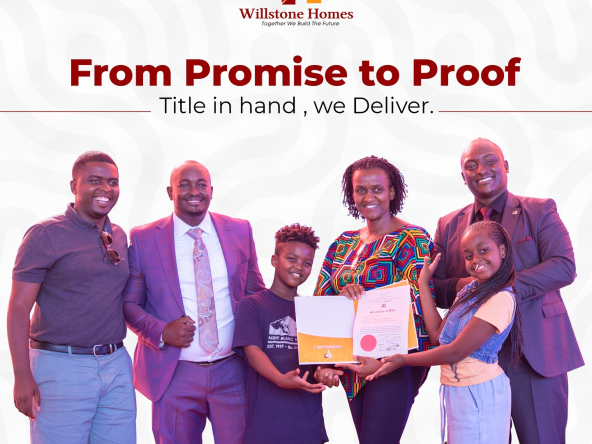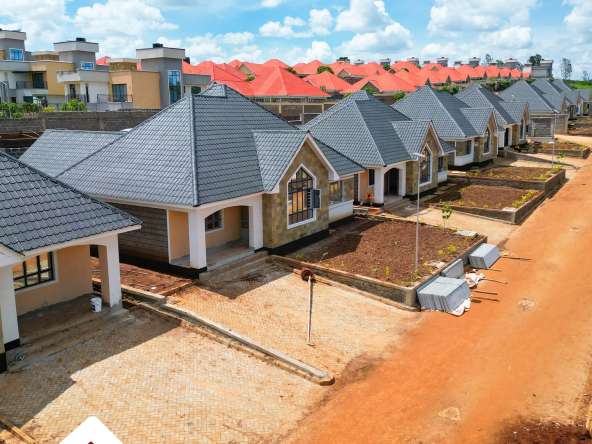As Nairobi’s skyline continues to evolve, the question of which construction method to use has become more relevant than ever. Homeowners, developers, and investors are now weighing the pros and cons of Prefab Modular vs Traditional Construction when building houses in Kenya. While both methods promise efficiency and functionality, the traditional home building method still holds a unique place in the Kenyan context. In this article, we will dive deep into the differences, benefits, and long-term implications of choosing traditional construction over prefab modular housing, especially in Nairobi’s dynamic real estate market.
Understanding the Construction Methods
Prefab modular construction involves manufacturing sections of a house in a factory and transporting them to the site for assembly. The idea is to reduce on-site construction time and minimize wastage. Traditional construction, on the other hand, involves building everything on-site using locally available materials like stones, bricks, cement, steel, and timber. This method is deeply embedded in Kenyan culture and has been used for decades to create strong, durable homes that can last generations.
Read Also: The Best Gated Community Developer in Kenya
Construction Time and Speed
Prefab homes are often praised for their speed. Since most parts are pre-made, assembling them on-site takes a few weeks. This can be an advantage for short-term housing needs. However, traditional construction, although slower, offers better quality control. Builders in Nairobi are familiar with the climatic conditions and construction standards, allowing them to adjust building practices for stronger, more climate-resilient homes. This is especially important in areas like Karen, Runda, and Lavington, where high-end, permanent housing is expected.
Cost Comparison in the Nairobi Context
Cost is always a deciding factor. Prefab modular housing may appear cheaper at first due to reduced labor and faster project timelines. However, when you factor in transportation, importation of prefabricated parts, and limited customizations, the savings quickly diminish. In contrast, traditional home building in Nairobi offers flexibility in budgeting. Builders can phase the construction based on available funds and use local materials to cut costs. Additionally, traditional homes tend to appreciate in value more rapidly than modular homes, offering better return on investment.
Durability and Suitability for Nairobi’s Climate
Nairobi experiences a mix of warm days, cool nights, and rainy seasons. Traditional homes, especially those built using stone and cement, are better suited to this climate. They offer better insulation, are more resistant to water damage, and can withstand wear and tear for decades. Prefab homes, depending on the material used, may not offer the same level of protection or longevity. When considering building a house in Nairobi, durability is key, making traditional construction the more reliable option.
Read Also: Off-Plan Houses in Nairobi: A Smart Investment for Homebuyers and Investors
Design Flexibility and Customization
Traditional construction provides complete freedom when it comes to design. Whether you’re envisioning a Swahili courtyard, a modern minimalist bungalow, or a multi-storey villa, traditional methods can bring your ideas to life. Kenyan architects and fundis are well-versed in these styles and can modify designs on-site to meet your specific preferences. Prefab modular homes, on the other hand, come with pre-designed modules, limiting design flexibility. Any customizations often come at an extra cost and can delay the fast timelines prefab homes are known for.
Access to Local Materials and Skilled Labor
One of the strongest arguments in favor of traditional construction is the easy access to quality local materials. Nairobi and its surrounding areas have a robust supply chain for construction materials such as stones, timber, sand, cement, and steel. Skilled labor is also readily available, from masons and carpenters to plumbers and electricians. This makes traditional construction not only more affordable but also more sustainable, supporting the local economy and reducing the carbon footprint associated with importing prefab parts.
Legal Compliance and Market Acceptance
Traditional construction methods are well understood and accepted by local authorities in Kenya. Building approvals, inspections, and certifications are easier to navigate because the structures conform to local building codes. In contrast, prefab modular homes may encounter hurdles due to unfamiliar designs or non-standard materials, which can delay approvals. Banks and insurance companies also tend to favor traditionally built homes, as they are easier to value and insure.
Long-Term Investment and Resale Value
In Kenya’s real estate market, traditional homes continue to command higher resale and rental value compared to prefab modular housing. Buyers and renters are more inclined to choose stone or brick houses due to their perceived strength and longevity. This makes traditional construction the better choice for those building with an eye on long-term returns.
Read Also: Ready-to-Move-In Homes in Kenya: Skip the Wait, Start Living Today
Side-by-Side Comparison
| Feature | Prefab Modular Homes | Traditional Construction |
|---|---|---|
| Construction Time | Fast (4–8 weeks) | Moderate to slow (3–12 months) |
| Initial Cost | Lower for basic models | Higher, but flexible and scalable |
| Durability | Moderate, depends on material | High, proven to last decades |
| Design Flexibility | Limited customization | Full customization and architectural freedom |
| Weather Suitability | Moderate resistance | Excellent for Nairobi’s climate |
| Skilled Labor Availability | Limited, mostly factory-based | Abundant and locally available |
| Approval and Financing | May face regulatory delays | Easily approved and financed |
| Resale and Market Value | Moderate | High and consistently rising |
Final Thoughts: The Better Choice for Nairobi
When you weigh all the factors—cost, durability, customization, approval ease, and long-term value—traditional construction clearly stands out. While prefab modular housing may be suitable for temporary shelters or very low-budget builds, it lacks the strength, prestige, and investment potential of a traditionally built home. Nairobi’s diverse climate and maturing real estate market demand homes that are resilient, beautiful, and built to last.
If you’re planning to build a permanent home in Nairobi, traditional construction offers not just a house, but a legacy. With access to skilled labor, quality local materials, and trusted architectural talent, traditional home building remains the smartest and most sustainable choice for discerning homeowners in Kenya.
Read Also: House Plans in Kenya: Modern and Affordable Designs




